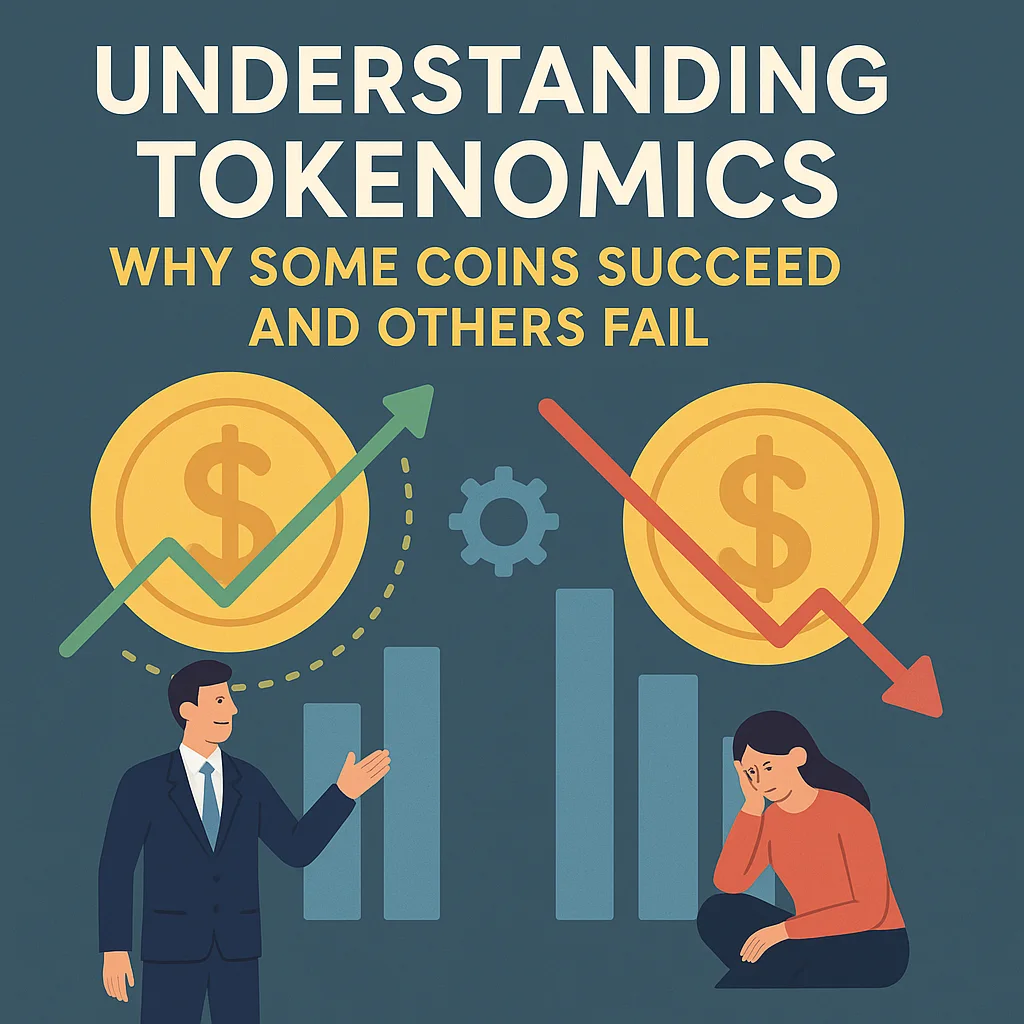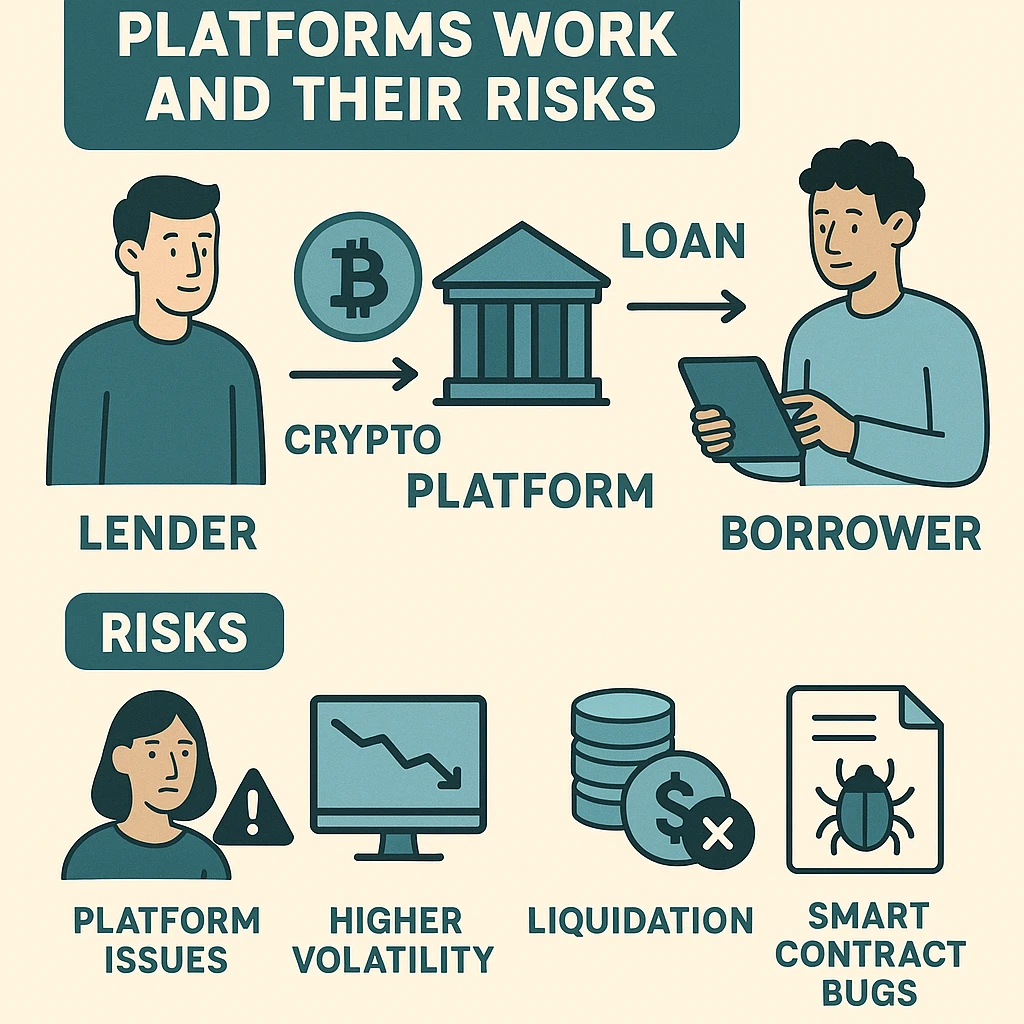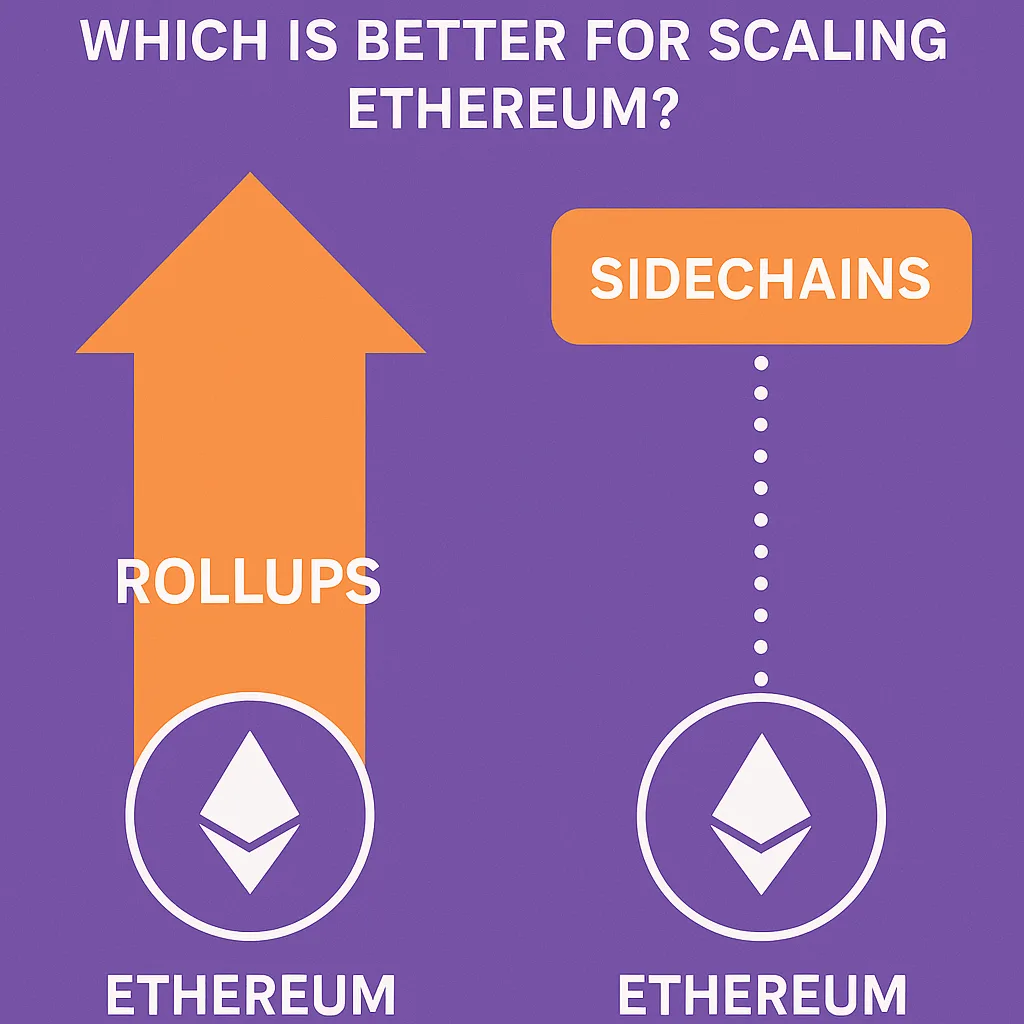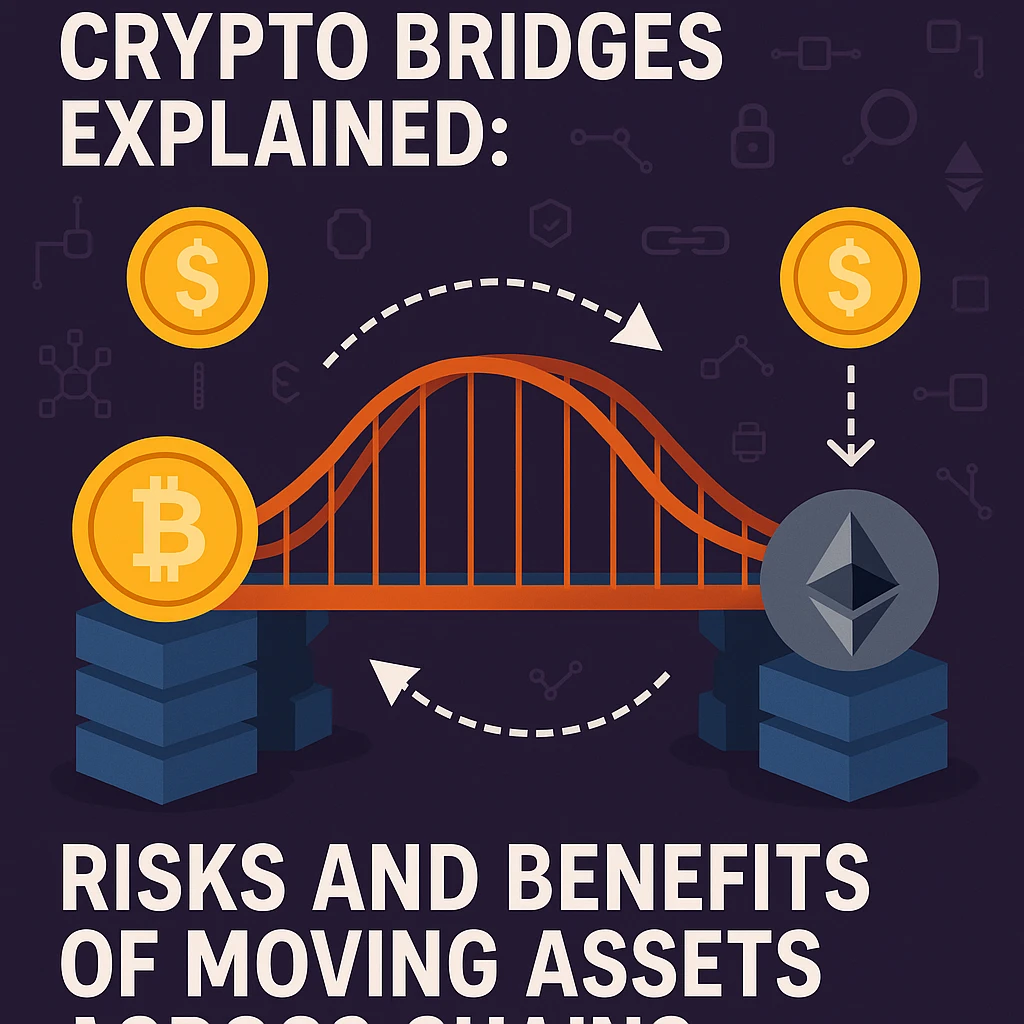The success of a coin in the quickly changing cryptocurrency space depends primarily on tokenomics, the economic framework that supports a digital asset, rather than just technology or marketing. Tokenomics can promote long-term growth, sustainability, and adoption if it is properly designed. However, tokens that are badly designed fail because they lack use cases, are unstable, and are susceptible to manipulation.
This thorough manual compares successful and unsuccessful case studies, looks at the components of successful token models, explains why tokenomics is important, and provides advice on how to create stable token ecosystems. You can understand why some tokens thrive while others fail by studying tokenomics.
1. What Is Tokenomics?
Tokenomics—a portmanteau of "token" and "economics"—refers to:
-
Token design: supply, burning, inflation, issuance schedule, and governance.
-
Economic incentives: how tokens promote market behavior, funding, and network participation.
-
Utility & governance: the purposes tokens serve—access, staking, voting, collateral.
-
Market structure: liquidity, exchange listings, vesting, ecosystem growth.
Incentives from developers, users, investors, and other stakeholders are aligned by effective tokenomics, guaranteeing that the token gains practical value and utility.
2. Core Elements of Tokenomics
2.1 Token Supply and Distribution
-
Fixed vs. Inflationary Supply:
-
If demand continues, a fixed supply (such as Bitcoin's 21M cap) encourages scarcity and possible appreciation.
-
Continuous token issuance by inflationary tokens is beneficial for rewarding actors, but if left unchecked, it could dilute value.
-
-
Distribution Mechanisms:
-
ICOs, airdrops, mining, liquidity mining, initial exchange offerings, and grants.
-
Fairness in allocation prevents early concentration and encourages widespread adoption.
-
-
Vesting Schedules:
-
In order to discourage quick sell-offs and align long-term incentives, Locks distributed tokens (to investors and founders) for a predetermined amount of time.
-
2.2 Utility: Token Use Cases
Tokens must serve specific, genuine functions within their ecosystems:
-
Access & Fees: tokens as access keys to services or for paying network fees (e.g., ETH used for gas).
-
Staking & Collateral: Token locking protects finance operations (DeFi lending) or network consensus (PoS).
-
Governance: tokens that allow for on-chain voting—such as MakerDAO's MKR and Compound's COMP—that control policy changes, treasury allocation, and protocol upgrades.
-
Revenue Sharing / Dividends: token-holders receive part of platform revenues.
-
Incentives & Rewards: liquidity mining tokens reward users for providing ecosystem support (e.g., Uniswap's UNI, Aave's AAVE).
-
Burn Mechanisms: deflationary systems where fees or revenues are used to destroy tokens, reducing supply over time (e.g., Binance BNB burns).
Token utility underpins demand—without it, tokens can stall or collapse.
2.3 Incentive Structures
Effective tokenomics balances:
-
Short-term incentives: liquidity rewards, launch bonuses.
-
Long-term engagement: lockups, governance participation, staking.
-
Burn vs. inflation trade-offs: balancing scarcity with reward mechanics.
Token value and user trust can be undermined by misalignment, such as dumping brought on by vesting or staking inflation.
2.4 Governance & Community
Tokens with robust governance give stakeholders voice in decision-making:
-
On-chain voting determines updates and protocol changes.
-
Community forums foster transparency and collective ownership.
-
Developer incentives align growth efforts with stakeholder interests.
Poorly governed tokens often lose direction and community support, hindering adaptability and value realization.
3. Why Tokens Fail
Several token failures illuminate the importance of sound economics:
3.1 Over-Minting / Unchecked Inflation
The value of issued tokens is excessively diluted. In particular, if utility lags (e.g., tokens that inflate faster than growth), projects may later find it difficult to sustain their price.
3.2 Concentrated Ownership
Market manipulation and a lack of decentralization are likely to occur if a small number of wallets control the majority, and retail investors are shut out.
3.3 Weak or Absent Utility
Speculative tokens with no practical use are unable to maintain demand when the market declines.
3.4 Poor Incentive Timing
When initial holders unlock, massive dumps could result from missing vesting schedule protections, rapidly crashing the value of the token.
3.5 Governance Failure
Without organized governance, projects stagnate. Decision-making becomes centralized or chaotic, causing instability.
3.6 Regulatory Intervention
If tokens with securities-like structures promise profits, dividends, or centralized control without adhering to regulations, they may be subject to crackdowns.
4. Why Tokens Succeed: Case Studies
4.1 Bitcoin: Digital Gold with Fixed Supply
Scarcity and consistent issuance are key factors in Bitcoin's success. Its halving schedule and 21 million coin cap create a definite store-of-value story. Bitcoin continues to hold a dominant position as "digital gold" due to its widespread adoption.
4.2 Ethereum (ETH): Network Fuel and Innovation Hub
The Ethereum token, which is used for gas, DeFi collateral, NFTs, and staking, was designed to be all-purpose. Security and token value are balanced by its flexible supply model, which is somewhat inflationary but burns a portion of fees.
4.3 Binance Coin (BNB): Exchange Utility and Burning
Functional utility (discount on trading fees, platform access) and a well-publicized burn schedule financed by Binance's profits—which increases demand for token buybacks—are the main factors contributing to BNB's success.
4.4 MakerDAO (MKR and DAI): Decentralized Stablecoins
MakerDAO regulates the issuance of decentralized stablecoins (DAI) using governance tokens (MKR). Tokenomics encourage DAI stability, preserve protocol reserve levels, and reward governance involvement.
4.5 Uniswap (UNI): Liquidity Alignment
UNI distributed tokens to early community members and liquidity providers. Governance was decentralized—and early airdrops created strong network effects and price support.
5. Designing Healthy Tokenomics (A Framework)
Here’s a step-by-step approach to structuring tokenomics effectively:
5.1 Define Token Purpose
-
Fuel: Are tokens required to use the network?
-
Gas: Are tokens required to pay for transactions?
-
Governance: Will tokens empower voting?
-
Stake/Collateral: Can tokens be staked for rewards or security?
5.2 Set Supply Caps and Inflation
-
Fixed vs. Inflationary: choose structure based on purpose (store-of-value vs. user incentive).
-
Schedule: Half-life cycles, emissions curves, reserves.
5.3 Allocate Responsibly
Stake allocation in fairness:
-
Community (e.g., airdrop) 40–60%
-
Founders 10–20% with vesting
-
Advisors/partners 10%
-
Treasury or ecosystem fund 10–20%
5.4 Build Governance Mechanisms
-
On-chain multi-signature or DAO models
-
Quorum, proposal thresholds, voting timelocks
-
Transparency in decisions
5.5 Introduce Incentive Layers
-
Liquidity mining
-
Staking rewards
-
Burn mechanisms
-
Fee-sharing or buy-and-burn
5.6 Incorporate Anti-Dump Measures
-
Vesting schedules
-
Cliffs
-
Lockups for Treasury
-
Staking incentives
5.7 Plan for Future Adjustments
-
Governance enables future economic adjustments
-
Emergency mechanisms for crisis (e.g., rebalances, supply adjustments)
6. Token Metrics That Matter
Key metrics help evaluate token soundness:
-
Market Cap & FDV: identifies overvaluation
-
Token Velocity: high turnover may harm price stability
-
Hold Metrics: centralized ownership vs. broad distribution
-
Active addresses & staking ratios: network engagement signal
-
Fiat utility and on-ramps/off-ramps
7. Common Tokenomic Traps to Avoid
-
Uncapped vesting cliffs, causing sudden supply floods
-
High initial allocations to insiders
-
Undefined issuance plans, undermining trust
-
Utility without involvement—building tokens without functional ecosystem features
-
Lack of governance structure, leading to decision-making asymmetry
-
Regulatory non-compliance—selling security-like tokens
8. Lessons from Notable Failures
-
Terra’s LUNA/UST collapse: Demand collapse and misaligned incentives caused algorithmic stablecoins to fail.
-
SAFE/ICO-era tokens: Underpriced lifecycles were caused by aggressive dumps following ICOs, poor utility, or central control.
-
Illiquid exchange tokens with no external listings: price stagnation and low secondary market activity
9. The Investor's Perspective
When assessing a token investment:
-
Read the token whitepaper & economics section: check issuance, utility, purpose.
-
Analyze distribution: who holds and how it unlocks?
-
Check staking & burn logic: deflationary mechanisms or long-term incentive alignment?
-
Study governance: how are decisions made? Are they transparent?
-
Match utility to use-case: is token needed now, or just for speculation?
-
Assess network engagement: check active addresses, traded volumes, staking stats, GitHub activity.
10. The Future of Tokenomics
10.1 Evolved Models
-
Dual token systems (gas and governance separate): e.g., LUNA / UST, but need strong structure
-
Programmable token features: tokens that adjust supply or yield as conditions change
-
Behavioral economics gamification: rewarding good actions or penalizing gaming
10.2 Regulatory Maturation
Design and compliance will be impacted by new frameworks that differentiate between governance, utility, and investment tokens.
10.3 Interoperability & Bridges
Tokens will work across chains—requiring consistent economic models across ecosystems.
10.4 Real-World Asset (RWA) Tokenization
Tokenization of real assets may inject tangible value but requires robust valuation and redemption mechanics.
11. Conclusion
Tokenomics is the primary factor that makes cryptocurrency projects successful, not just a bonus feature. Reputable tokenomics create utility, trust, and long-term value expansion. They represent the goal of the token, prevent dilution, and encourage network behavior.
Developers and investors can create tokens that succeed by avoiding tokenomic pitfalls, such as misaligned supply schedules, inadequate distribution, or lack of utility, and by adhering to best practices. Tokenomics is the blueprint that distinguishes long-term value from speculative, short-lived trends, so projects and investors alike must study it thoroughly.





Leave a Reply